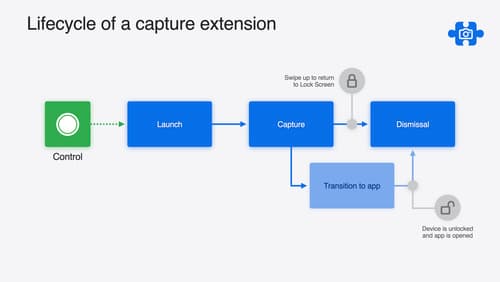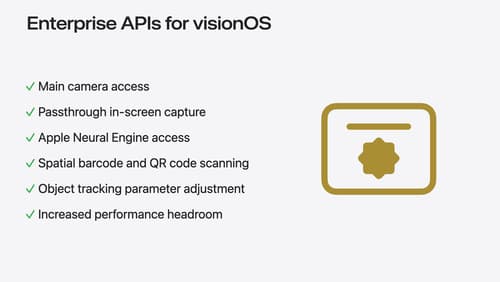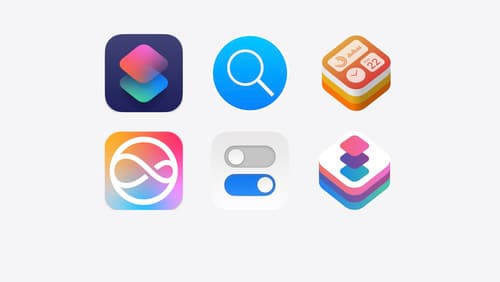How do I implement fileprovider
Asked on 2024-07-30
1 search
To implement a file provider using the new features discussed at WWDC, you can leverage the file entity API, which is particularly useful for document-based apps or apps that manage files. Here are the key steps and concepts:
-
File Entity API: This API allows you to represent files as entities that other apps can understand and access securely. This is useful for scenarios where your app's entities are files, such as text documents or images.
-
Creating a File Entity Identifier: You can create a
file entity identifierwith a URL or as a draft identifier if the file doesn't exist yet. The identifier uses the URL's bookmark data, ensuring the entity remains valid even if the file is moved or renamed. -
Supported Content Types: When implementing a file entity, you need to provide a list of supported content types. This allows other apps to understand what types of content your file entity can represent.
-
Secure Access via Siri and Shortcuts: Siri and Shortcuts can facilitate secure access to your file entities, allowing other apps to perform actions on them, such as rotating an image.
Here is an example of how you might implement a file entity:
struct MyPhotoEntity: AppEntity {
static var typeDisplayRepresentation = TypeDisplayRepresentation(name: "Photo")
var id: FileEntityIdentifier
var displayRepresentation: DisplayRepresentation {
DisplayRepresentation(title: "My Photo")
}
static var supportedContentTypes: [UTType] {
return [.image]
}
init(id: FileEntityIdentifier) {
self.id = id
}
}
In this example, MyPhotoEntity represents a photo file. The id is a FileEntityIdentifier, which can be created with a URL. The supportedContentTypes array specifies that this entity supports image files.
For more detailed information, you can refer to the session What’s new in App Intents (09:58).
Relevant Sessions
These sessions provide a comprehensive overview of how to work with file entities and manage captured content securely.

Build a great Lock Screen camera capture experience
Find out how the LockedCameraCapture API can help you bring your capture application’s most useful information directly to the Lock Screen. Examine the API’s features and functionality, learn how to get started creating a capture extension, and find out how that extension behaves when the device is locked.

Introducing enterprise APIs for visionOS
Find out how you can use new enterprise APIs for visionOS to create spatial experiences that enhance employee and customer productivity on Apple Vision Pro.

What’s new in App Intents
Learn about improvements and all-new features with App Intents, and discover how this framework can help you expose your app’s functionality to Siri, Spotlight, Shortcuts, and more. We’ll show you how to make your entities more meaningful to the platform with the Transferable API, File Representations, new IntentFile APIs, and Spotlight Indexing, opening up powerful functionality in Siri and the Shortcuts app. Empower your intents to take people deep into your app with URL Representable Entities. Explore new techniques to model your entities and intents with new APIs for error handling and union values.
